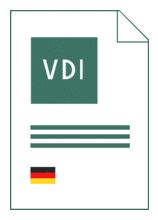Standards Worldwide
Standards Worldwide
Phone +49 30 58885700-07

Technical rule [CURRENT]
VDI 4230 Blatt 2:2008-01
Biological procedures to determine effects of air pollutants (bioindication) - Biomonitoring with earthworms
- German title
- Biologische Verfahren zur Erfassung der Wirkung von Luftverunreinigungen (Bioindikation) - Passives Biomonitoring mit Regenwürmern als Akkumulationsindikatoren
- Publication date
- 2008-01
- Original language
- German, English
- Pages
- 26
- Publication date
- 2008-01
- Original language
- German, English
- Pages
- 26
Product information on this site:
Quick delivery via download or delivery service
Buy securely with a credit card or pay upon receipt of invoice
All transactions are encrypted
Short description
In principle two different areas of application can be distinguished for this guideline: 1): Determination of a pollutant concentration in earthworm tissue (possibly also separately in the content of the gut) as a method of surveying longterm pollutant concentrations in terrestrial ecosystems (see, e. g., the German Environmental Specihumusfresmen Bank). Focusing on earthworm tissue without the content of the gut can reduce quantitative and qualitative variability, which arises primarily from the gut content, and assure comparability of the data over long time periods. 2) Determination of the pollutant concentration in earthworms (tissue plus content of the gut) in order to establish the possible effects of pollutants on the terrestrial food webs/food chains (secondary poisoning approach). The objective in this case is to estimate the risk to the (end-)consumers such as birds and mammals arising from accumulation of pollutants through ingestion of food. Earthworms serve as indicators of accumulation in both application areas. They thus represent soil invertebrates in general, which permit statements to be made about the quality of soil as an environmental compartment. Generally, there are only slight differences between the methods used in the two approaches. However, in a number of points, e. g. preparation of the worms with or without gut content, the differences are so great that they are presented in parallel.
Content
ICS
13.020.40,
13.040.20
Also available in
Loading recommended items...
Loading recommended items...
Loading recommended items...
Loading recommended items...
